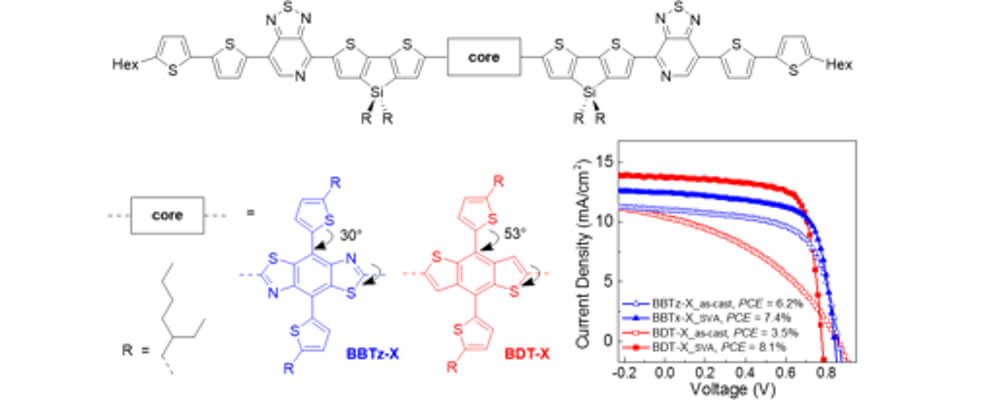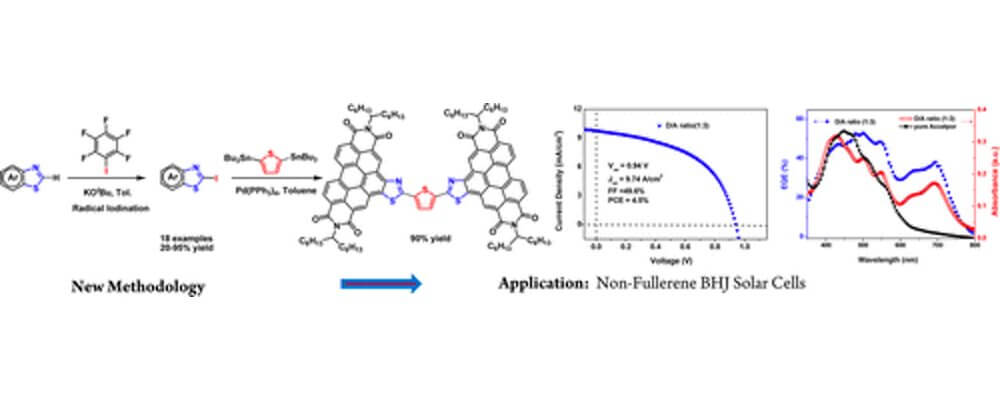Intermediate-Sized Conjugated Donor Molecules for Organic Solar Cells: Comparison of Benzodithiophene and Benzobisthiazole-Based Cores
Siyuan Zhang, Junxiang Zhang, Maged Abdelsamie, Qinqin Shi, Yadong Zhang, Timothy C. Parker, Evgheni V. Jucov, Tatiana V. Timofeeva, Aram Amassian, Guillermo C. Bazan, Simon B. Blakey, Stephen Barlow, and Seth R. Marder
Chemistry of Materials,
2017, 29, (18), 7880; DOI:10.1021/acs.chemmater.7b02665

09/2017
It has never been more important to develop effective methods to harness energy from sunlight. In this report, a collaborative team, including two CCHF research groups, describe the creation of new organic molecules with energy harvesting efficiencies approaching the current state-of-the-art. These developments provide new molecular structures for future investigations.
Organic Solar Cells, or OSC’s for short, are solar cells based on organic small molecules and/or polymers. These chemicals have attracted tremendous interest because of their flexibility, ease of modification, and potentially low cost. Typically, such cells consist of blends of two different materials that act as electron donors and electron acceptors. The state-of-the-art power conversion efficiency (PCE), which refers to the portion of energy in the form of sunlight that can be converted into electricity of OSCs from research laboratories is around 13%. The benzodithiophene (BDT) building block has been widely used in donor materials, including some analogues that have been used in very efficient devices, and could potentially impart somewhat different and interesting properties. The Benzobisthiazole (BBTz) class of molecules has received much less attention, presumably due to the challenges associated with their reaction using traditional chemical methods. However, this difficulty has recently been overcome through the development of a direct C–H bond iodination procedure developed as a collaboration between the Blakey and Marder groups.
This collaborative report, with National Science Foundation funding through the CCHF and Office of Naval Research (ONR) support, employs the recently described iodination chemistry to make two intermediate-sized donor materials: BBTz-X and BDT-X. The research team has systemically explored the impact of the different cores on their optical and electrical properties. Under appropriate conditions, blends of both materials with a fullerene acceptor yield PCE values above 7%, which compare well with other donor molecules of similar size. This work indicates how replacing BDT with BBTz can be used to fine-tune the properties of OSC materials, as well as demonstrating chemistry by which this building block can be incorporated into larger molecules for future investigations in this area.
